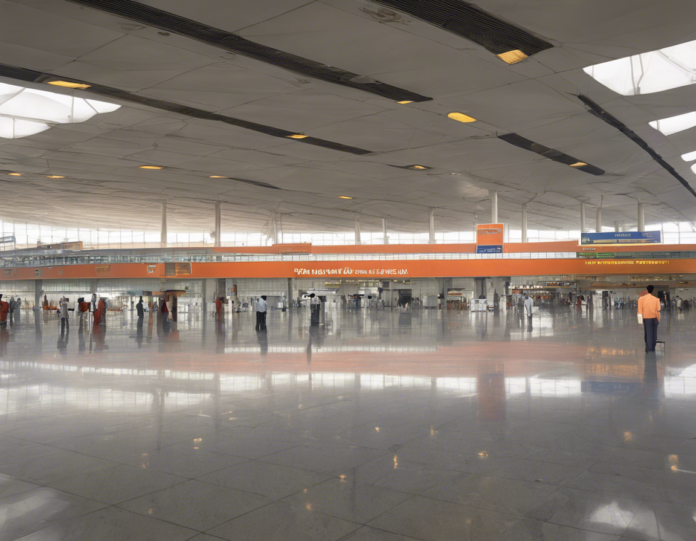The Ayodhya Airport, officially known as the Ayodhya International Airport, is a new airport in the city of Ayodhya in the state of Uttar Pradesh, India. This airport holds immense significance as it is being developed to cater to the increasing influx of tourists and pilgrims visiting Ayodhya, a city known for its rich cultural and religious heritage. In this comprehensive guide, we will delve into everything you need to know about the Ayodhya Airport, from its inception to its impact on the region’s tourism and economy.
History and Development
The idea of establishing an airport in Ayodhya was conceptualized to enhance connectivity to this historically and religiously significant city. The airport project was approved by the Government of India as part of its regional connectivity scheme, aiming to boost tourism and improve air connectivity in the region. The foundation stone for the airport was laid in 2020, marking the beginning of its construction phase.
Construction work on the Ayodhya Airport is progressing rapidly, and it is expected to be operational in the near future. The airport is being built in accordance with international standards, incorporating modern amenities to ensure a seamless travel experience for passengers.
Location and Connectivity
The Ayodhya Airport is strategically located in the Faizabad district of Uttar Pradesh, in close proximity to the city of Ayodhya. Its proximity to Ayodhya’s major tourist and religious sites makes it a convenient gateway for visitors. The airport’s location is also well-connected to major road networks, allowing for easy access to neighboring cities and regions.
Once operational, the Ayodhya Airport is expected to boost regional connectivity and facilitate smoother travel for domestic and international tourists visiting Ayodhya. The airport’s proximity to key tourist attractions is set to spur tourism growth in the region, thereby contributing to the local economy and creating employment opportunities.
Facilities and Services
The Ayodhya International Airport is poised to offer a range of facilities and services to passengers, ensuring a comfortable and pleasant travel experience. Some of the key amenities expected at the airport include:
- Modern Terminal Building: The airport will feature a state-of-the-art terminal building equipped with check-in counters, security checkpoints, lounges, and retail outlets.
- Runway and Taxiway: The airport will have a well-designed runway and taxiway to accommodate various aircraft sizes, ensuring smooth take-offs and landings.
- Parking Facilities: Adequate parking space will be provided for both passengers and airport staff, along with facilities for car rentals and taxi services.
- Food and Beverage Outlets: Passengers can enjoy a selection of dining options, including cafes and restaurants offering a variety of cuisines.
- Retail Outlets: The airport is expected to feature retail outlets selling a range of products, from souvenirs to travel essentials.
- Customs and Immigration: International passengers will have access to customs and immigration facilities for a hassle-free arrival and departure process.
Impact on Tourism and Economy
The inauguration of the Ayodhya Airport is poised to have a transformative impact on the tourism sector and economy of the region. The enhanced air connectivity provided by the airport will attract a greater number of tourists, both domestic and international, to Ayodhya and its surrounding areas. This influx of visitors is expected to boost the local economy through increased spending on accommodation, dining, shopping, and transportation services.
Furthermore, the development of the Ayodhya Airport is set to create job opportunities in various sectors, including aviation, hospitality, tourism, and retail. The airport’s operations will directly generate employment for local residents, while also fostering economic growth through infrastructure development and investment in the region.
Sustainable Practices and Environmental Impact
In line with global sustainability initiatives, the Ayodhya Airport is being developed with a focus on environmental conservation and energy efficiency. Special attention is being given to the airport’s design and operations to minimize its carbon footprint and environmental impact. Some of the sustainable practices being implemented include:
- Energy-efficient Infrastructure: The airport will utilize energy-efficient technologies and renewable energy sources to reduce energy consumption and greenhouse gas emissions.
- Water Conservation: Measures will be put in place to conserve water through efficient usage and recycling systems within the airport premises.
- Waste Management: The airport will implement waste segregation and recycling practices to minimize waste generation and promote a clean environment.
- Green Spaces: The airport will incorporate green spaces and landscaping to enhance the aesthetic appeal of the surroundings and support biodiversity.
By adopting sustainable practices, the Ayodhya Airport aims to set a benchmark for eco-friendly aviation infrastructure and contribute to the preservation of the region’s natural resources.
FAQs (Frequently Asked Questions)
1. When is the Ayodhya Airport expected to be operational?
The Ayodhya Airport is expected to be operational in the near future, with construction work progressing rapidly.
2. What are the key facilities available at the Ayodhya International Airport?
The airport will feature a modern terminal building, runway, taxiway, parking facilities, food and beverage outlets, retail stores, customs, and immigration services.
3. How will the Ayodhya Airport impact tourism in the region?
The airport is expected to boost tourism by enhancing air connectivity, attracting more visitors to Ayodhya and its neighboring attractions.
4. What measures are being taken to ensure sustainability at the Ayodhya Airport?
The airport is adopting sustainable practices such as energy-efficient infrastructure, water conservation, waste management, and green spaces to minimize its environmental impact.
5. How will the Ayodhya Airport contribute to the local economy?
The airport’s operations will create job opportunities in various sectors, stimulate economic growth through increased tourism revenue, and drive infrastructure development in the region.
In conclusion, the Ayodhya Airport holds immense promise as a catalyst for economic development and tourism growth in the region. Through its modern facilities, enhanced connectivity, and sustainable practices, the airport is poised to become a key hub for travelers visiting Ayodhya, further solidifying the city’s status as a premier cultural and religious destination.




